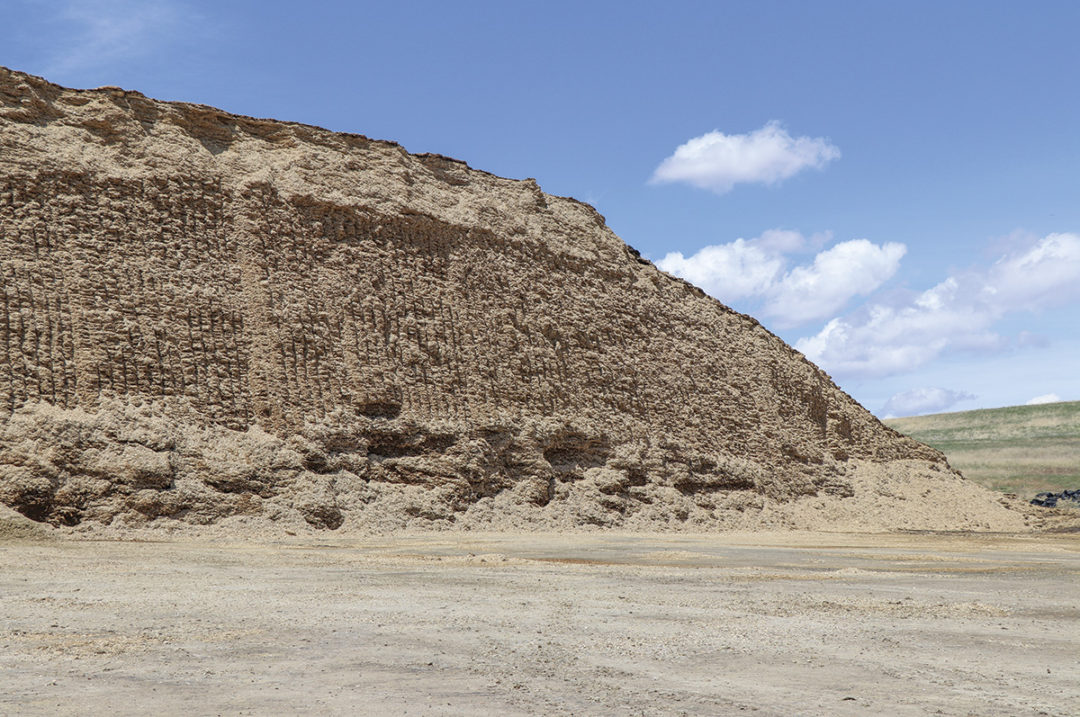The value of milk is influenced by local and world markets. Increasingly, the price of milk and milk products on the world market determines what dairy producers receive for revenues from producing and selling milk. By far, the greatest impact on farm profitability is by maximizing the efficiency of producing milkfat and protein.
Many articles have been written about management strategies that can decrease production costs or improve the efficiency of producing milkfat and protein. There are a few areas on a farm that don’t receive as much attention by publications, consultants and even dairy producers themselves that can have a dramatic impact on farm profitability.
Silage shrink, spoilage and waste
Many dairy producers are aware or have experience feeding silage that didn’t ferment well and caused reduced performance in their cattle. When discussing the use of forage treatment products with the dairy producer, many will often say using a forage treatment product is insurance to avoid having silage undergo a poor fermentation and result in reduced performance of their cows. They can also get stuck on the cost to purchase and apply a product that improves silage fermentation.
Most dairy producers don’t weigh the silage being put up and when it is fed out. Thus, they are not measuring the difference between what is put up and what is actually fed. Because this difference is unknown to them, many dismiss silage shrink and losses as important and elect to ignore the benefits of improving fermentation efficiency with the use of silage fermentation products such as bacterial inoculants and oxygen-scavenging preservatives. Researchers have shown that silage dry matter (DM) losses from untreated silage ranges from 10% to 16%, whereas treated forage will have DM losses of 7% to 13%. For a 500-cow dairy where a cow eats 75 pounds of silage per day, the estimated annual savings from reduced DM losses (3% to 4% less) can exceed 250 tons of silage worth over $19,000.
In addition to the DM and tons of silage lost from untreated silage and less-efficient fermentation, dairy producers can underestimate the economic impact of discarding spoiled or moldy feed. Silage from the top inadequately covered or bad on the edges and discarded can seem to be a small amount. However, researchers have determined this spoiled feed underwent secondary fermentation in the presence of oxygen and half or more of the DM is lost to heat and volatilization. A dairy producer may estimate or measure the weight of the spoiled silage discarded, but the true losses of DM and nutrients are often more than double what they see going out to the manure pile.
Testing forage dry matter percentage
Some dairy farms rely on their nutritionist to sample forages and update DM percentage values for the loading sheets used for the mixer wagon. However, most nutritionists visit their client farms once or twice per month, and results from the lab can add a few more days after the visit to get DM percentage values and updated loading sheets to the feeder. It currently costs between $9 and $10 per day to feed a lactating dairy cow, with two-thirds of the cost coming from the concentrate portion. If the DM percentage of the forage is off by 3 percentage points, it may not seem like much or costly to feed more forage, but the impact on the concentrate portion can be dramatically higher. For example, if the forage DM percentage was off by 3 percentage points, the concentrates being fed will be 1 pound short or 1 pound in excess. If 1 pound of concentrate is shorted to the cows, reduced performance would be expected. However, if the cows receive an extra pound of concentrate, it would increase the cost to feed a lactating cow by 35 cents per day until the incorrect DM percentage of the forage was corrected. For a 500-cow dairy, this would cost $175 per day.
DM variability is higher for silage stored in bags and upright silos than bunker silos or drive-over piles. Because bunkers and piles are filled from back to front in a wedge progression, the changes in DM percentage due to changing varieties, cutting day or fields is gradual. In upright silos and bags, the change is abrupt and can quickly throw the ration off. DM testing should be done once or twice a week if feeding from upright silos and bags, whereas weekly testing for bunker silos and drive-over piles is sufficient.
An easy and quick way to test forage DM percentage changes on-farm is to use a food dehydrator. Samples of the wet feeds can be placed on a paper plate in the food dehydrator. Weight of the wet feed is recorded, and then when the sample is dry the weight of the dry sample is divided by the wet feed to get the DM percentage of the feed. Depending on the amount of wet feed placed in the dehydrator, results can be determined in a few hours.
Optimizing the number of heifer calves born each year
Many articles have been written about using beef semen on dairy farms and how it could benefit genetic progress and value of bull calves sold from the farm. However, of greater economic consequence is the use of this or other management strategies to optimize the number of heifers being housed, cared for and fed.
In particular, the cost to feed a heifer from birth until entry into the lactating herd has more than doubled over the past 10 years. Previously, with lower heifer-rearing costs, dairy producers could raise a few extra heifers and cull a few older cows to keep the lactating herd younger. However, with current raising costs, it is quite costly to cull a mature cow early and replace her with a heifer. Improved genetics also play a role, as substantial strides have been made with improvements in productive life and housing conditions that allow cows to be more productive and profitable at an older age. Raising the optimal number of heifers to meet but not exceed the replacement needs of the dairy has a large economic consequence on farm profitability.
Improved profits can be had by reducing the number of heifer calves raised each year and is farm-specific and affected by the cost to raise a heifer, the value of a cull cow, the needed cull rate of the herd, the productive life genetics of the herd and cow comfort. However, a reasonable estimate would be a savings of $1,500 per reduced replacement heifer. For a 500-cow herd, reducing the number of heifers kept for replacements could save the dairy $30,000 per year.
Best cost and economical close-up dry cow rations
The differences and variation for lactating cow rations put together by nutritionists is becoming less. However, nutrition strategies and products used by nutritionists to feed dry cows remains quite large and, in some cases, extreme. The impact of hypocalcemia and energy metabolism in transition cows on health and performance has been well researched and understood. Interestingly, nutritionists use a variety of strategies and products to reach the ideal smooth transition with feeding cows during the dry and fresh cow periods. These nutrition strategies have varying levels of effectiveness and costs. Working with a nutritionist who understands the biology of the nutrition strategies, knowledge of products available and cost-to-benefit impact of the different products can lead to the best program regarding cow health and performance. One challenge is many dairy producers lack the knowledge to evaluate the approach used by a nutritionist. For example, fresh cow health and performance on a dairy may be good but may be under a nutrition strategy up to $1 per cow per day more expensive than an alternative nutrition approach.
Keeping the focus on profit leaks
Dairy producers are keenly aware of the importance of cost control, and some researchers are pointing a light in areas that need attention. However, there are a few areas where the focus is not as strong but equally important to dairy farm profitability, such as limiting shrink and DM losses in forages, regular DM percentage testing of silages, actively managing the number of dairy heifers and using a transition nutrition program that optimizes cow health and performance and ration cost.







